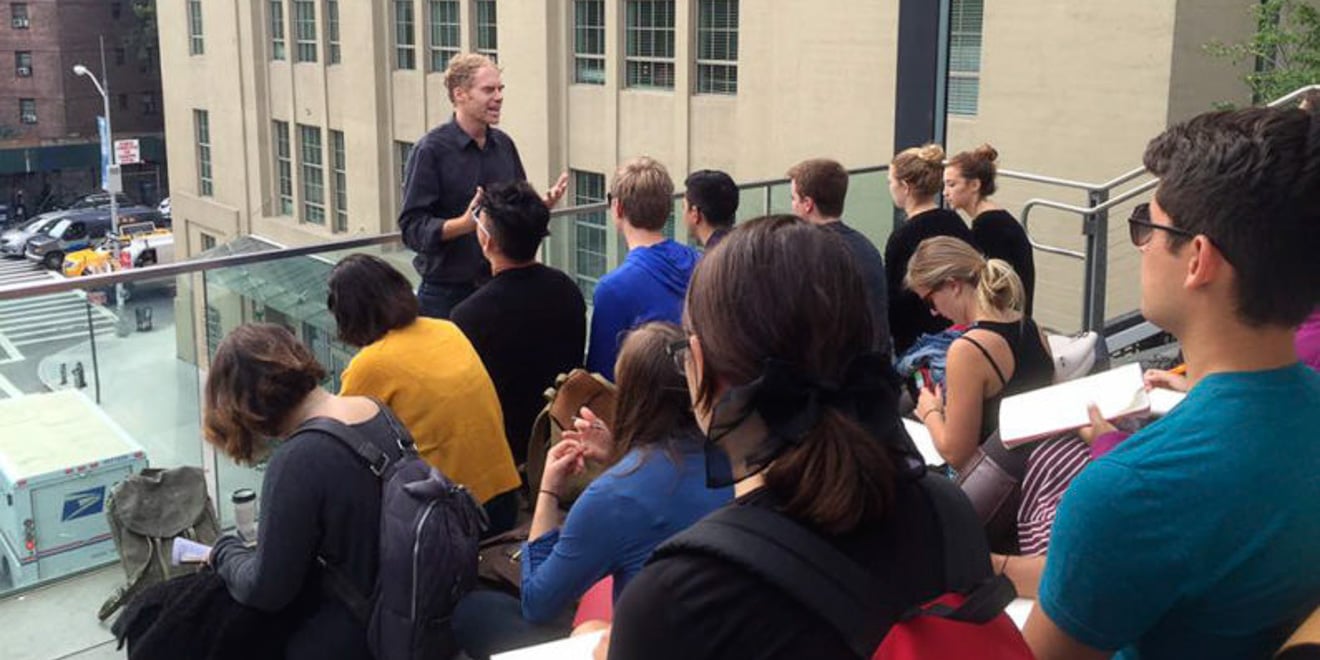Stanford in New York’s (SiNY) first-ever spring quarter offering, held earlier this year, marked the final step in the piloting process of the program — a quarter-long opportunity for Stanford students to live, work and take classes in New York City. Due to the success of the three-year pilot, Stanford will now move forward with the program on a year-round basis.
Each student participating in SiNY is matched to an internship the quarter before the program begins. The internships cover a wide variety of different fields.
“Internship placements vary quarter to quarter and from student to student,” Romani said. “The spring quarter saw internships from CNBC and WNYC to the NYC Commission on Human Rights and the Lower East Side Girls Club. We also had students at Clinique, Sidewalk Labs, Silvia Rivera Law Project, Lerer Hippeau, Rada Films and Owl Rock.”
According to SiNY Internship Program Manager Yuliya Mykhaylovska, New York’s large Stanford alumni base has been instrumental in making the program a success.
“Outside of the Bay Area and California, New York has the largest number of alumni — about 11,000 or more in the greater NYC area,” Mykhaylovska said. “Those alumni have played a really fantastic role in allowing our program to grow and opening up internship … [and] mentorship opportunities.”
According to past participants in the program, SiNY internship matching is extremely useful, especially for international students who may face added challenges when securing internships in the U.S.
“I loved how they had the internship [matching] component,” said Sarah Chey ’19, who was part of the spring SiNY program this year. “I’m international, so it’s difficult to find internship opportunities.”
Mykhaylovska said the SiNY program is also very accessible for first generation or low-income students who have an interest in a field but might not otherwise be able to afford an unpaid summer internship to explore that interest.
“The Stanford financial aid policies are very generous,” Mykhaylovska said. “Going abroad allows you to intern at organizations that may not necessarily pay.”
SiNY also offers student workshops, in partnership with a consultancy, on how to succeed in the workforce.
“I think that’s something missing [on Stanford’s main campus],” Mykhaylovska said. “Stanford is so academics-focused that you’re stuck worrying about what’s three feet ahead versus what’s three years ahead.”
Although they work during the day, SiNY students also take classes with other Stanford students, based on a quarter-long theme. The spring 2018 theme was that of a “global city.”
Julianna Chang ’19, a spring SiNY participant, described the city as a nexus that unites various disciplines and interests.
“[New York City] is the center for arts in America; it’s the center for finance; it’s the center for global corporations,” Chang said. “I think they chose the location because every quarter they could have a completely different theme, and they would still work in New York. If Columbia tried to do a Columbia in Silicon Valley, they couldn’t do an arts quarter.”
“I was really interested in the theme of a global city because I also study sociology and do a lot of work with gentrification, immigration,” Chang added. “Going to New York just seemed to be a really good place to be exposed to all of those topics.”
During past sessions, the SiNY theme has been much more narrowly tailored. Chey cited fall quarter’s focus on arts and architecture as an example.
“[The global city theme] was great for me because it was so broad, so basically any industry that was global could work,” Chey said. “A lot of different people [in the program] were working in different industries.”
Although the quarter in New York was certainly busy for Chey, with work and class taking up much of her day, she said it was all worth it.
“I feel like it was really great, always running around the city, and just really being a New Yorker,” Chey said.
Chang echoed Chey’s sentiments, adding that SiNY’s spring quarter helped her solidify her career choice.
“Now I know I really want to do global product marketing,” Chang said. “I know I wouldn’t have been able to get that experience through any other channel or program.”
Contact John Timony at jtimony ‘at’ stanford.edu.
